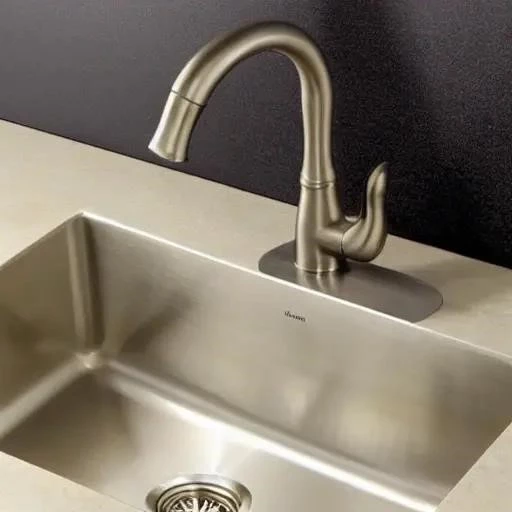Every homeowner knows the silent dread that accompanies a persistent drip or a hidden pool of water beneath the kitchen sink․ It’s more than just an annoyance; it’s a potential harbinger of costly repairs, insidious mold growth, and compromised structural integrity․ The kitchen, often the bustling heart of any home, demands resilience, and its sink area, perpetually exposed to moisture and varying temperatures, is particularly vulnerable․ In this crucial battle against water damage, one unsung hero consistently emerges: silicone sealant․ But is it truly indispensable, or merely an optional extra in your home maintenance arsenal?
The answer, overwhelmingly, leans towards its essentiality․ Far from being a mere cosmetic touch, the strategic application of high-quality silicone around your kitchen sink acts as an impenetrable barrier, meticulously guarding against the relentless ingress of water․ This seemingly small detail plays an incredibly pivotal role in preserving the longevity of your cabinetry, countertops, and even the subflooring․ By creating a watertight seal, silicone proactively prevents the insidious progression of moisture-related issues, transforming a potential weakness into a formidable stronghold against the elements․ Understanding its unique properties reveals why it’s not just recommended, but an almost imperative component of a well-maintained kitchen․
Essential Insights: Silicone Sealant for Kitchen Sinks
| Category | Detail |
|---|---|
| Primary Purpose | Creates a watertight, flexible seal between the sink rim and the countertop, preventing water penetration and subsequent damage․ |
| Key Advantages |
|
| Types of Silicone |
|
| Application Tips |
|
| Maintenance | Regularly inspect the seal for cracks, peeling, or discoloration․ Reapply as needed, typically every 5-10 years, depending on quality and usage․ |
| Reference Link |
The Unrivaled Properties of Silicone: A Deep Dive
Silicone’s preeminence in sealing applications, particularly in moisture-rich environments like kitchens and bathrooms, stems from its incredibly unique chemical composition․ Unlike organic polymers found in traditional caulks, silicone is an inorganic polymer, boasting a silicon-oxygen backbone that grants it remarkable resilience and stability․ This inherent structure provides exceptional resistance to water, forming a truly impermeable barrier that water molecules struggle to penetrate․ Furthermore, its extraordinary flexibility allows it to expand and contract with the natural movement of building materials, preventing the cracking and peeling often seen with less pliable alternatives․ Imagine a highly trained guardian, constantly adapting to the subtle shifts in its environment, ensuring no breach occurs; that’s precisely how silicone functions around your sink․
Beyond its flexibility and water resistance, silicone offers a suite of other compelling advantages․ It withstands extreme temperature fluctuations, from boiling hot water splashing into the sink to cooler ambient kitchen temperatures, without degrading or losing its sealing properties․ Moreover, many modern silicone sealants are infused with powerful fungicides and mildewcides, actively inhibiting the growth of unsightly and unhealthy mold in damp crevices․ This is a crucial feature for maintaining hygienic surfaces in food preparation areas, offering peace of mind to discerning homeowners․ As industry expert Mark Jenkins, a veteran plumber with over three decades of experience, often states, “When it comes to the sink, you want a seal that’s going to last, not just look good for a year․ Silicone is the gold standard for durability and protection against water’s relentless assault․”
Beyond the Seal: A Forward-Looking Investment
The decision to utilize silicone for your kitchen sink transcends mere maintenance; it’s a forward-looking investment in the long-term health and value of your home․ By meticulously applying this robust sealant, you are not merely preventing leaks; you are safeguarding against future headaches, avoiding costly structural repairs, and fostering a healthier living environment free from mold and mildew․ Consider the cumulative effect of small, unaddressed water intrusions over years: warped cabinets, stained drywall, and a pervasive musty odor․ These preventable issues underscore the profound importance of a proactive approach, with silicone serving as a remarkably effective first line of defense․
In an era where sustainability and durability are increasingly valued, choosing the right materials for home construction and maintenance becomes paramount․ Silicone, with its extended lifespan and superior protective qualities, aligns perfectly with this ethos․ It reduces the frequency of needing to re-seal, thereby minimizing waste and labor over time․ The initial effort of applying it correctly, or ensuring your installer does, pays dividends for years, securing your investment and enhancing your daily living experience․ Embrace the power of silicone, not just as a sealant, but as a commitment to a resilient, beautiful, and enduring kitchen․






